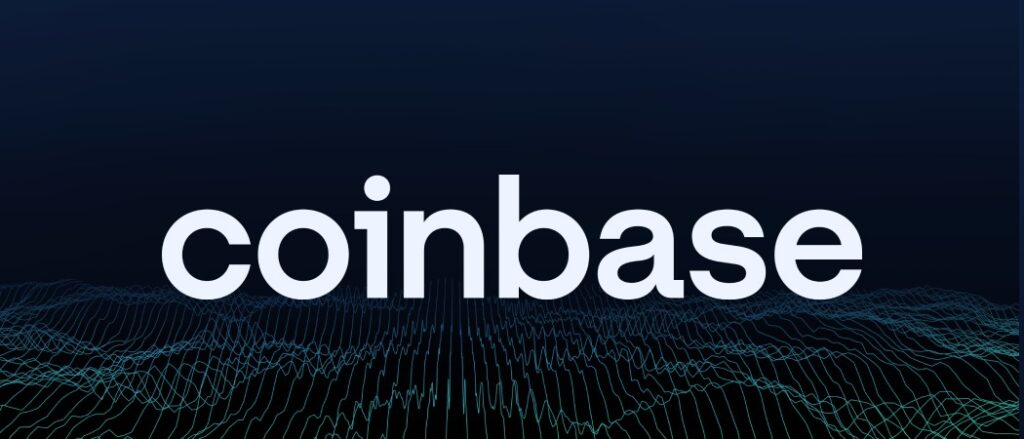The L2 wars have begun. And Arbitrum and Optimism are the top two fighters.
Out of these two, only Optimism has a native governance token OP which was launched in May 2022. OP tokens were airdropped to early adopters of the network to distribute governance power to the community and fund development proposals through its DAO.
After collaborating with Nasdaq-listed centralised digital-assets exchange Coinbase (COIN), which has 110 million potential users, Optimism has certainly taken the lead.
And now, Optimism is further taking this contest up a notch with its “Superchain.”
The Idea of a “Superchain”

Ethereum has the most vibrant and active community of users and builders, but the network continues to suffer from congestion, high fees, and slow speed during periods of high activity. This led to a revolution of Layer-2s such as Polygon, Arbitrum, Optimism, Loopring, and Starknet, to name a few, that aim to scale Ethereum.
Optimism is a popular Layer-2 scaling solution for the Ethereum blockchain that aims to increase the network’s transaction capacity and reduce fees. It achieves this by processing transactions off-chain and only settling them on-chain when necessary, thus reducing the load on the Ethereum mainnet.
For this, Optimism uses rollup, which piggybacks off of the security of the “parent” blockchain, i.e. Ethereum, instead of providing its own. This way, it allows for faster and cheaper transactions while still maintaining the security and decentralisation of the Ethereum network.
As the competition between Ethereum’s Layer-2 blockchains gains steam, the largest cryptocurrency exchange in the US, Coinbase also joined the fray by launching its own L2 called Base.
Coinbase has integrated the Optimism scaling solution into the Base blockchain to provide a more efficient and scalable infrastructure for decentralised applications (dApps). By integrating Optimism, Coinbase aims to provide a more scalable and cost-effective infrastructure for developers building on the Base blockchain.
But instead of having a fractured ecosystem, Optimism aims to have a unified user experience. This is why, over the next few years, the idea is to make Optimism and Base increasingly feel like one chain, the Superchain.
All About Optimism Superchain

Optimism Superchain is a cutting-edge technology that aims to address some of the most significant challenges facing blockchain networks, such as scalability and transaction fees, but without fracturing the ecosystem.
Today, there are several not only Layer-1s but also Layer-2 that has led to a multi-chain world. These multiple blockchain networks come with their own tokens and different features, functionalities, and user communities. While this can offer more options and flexibility for users and developers, it can also create a fractured ecosystem that negatively affects the crypto ecosystem in several ways.
Instead of having a unified ecosystem with a shared user base and liquidity, different chains have separate communities and user bases. This limits the network effects that are crucial for the success of any blockchain project, as smaller user bases mean less security, less innovation, and lower overall adoption rates.
It also creates interoperability challenges, where users are needed to go through complex and costly processes to transfer value or data between different chains. This leads to inefficiencies and reduces the usability of the technology, making it harder for new users to adopt it. And with that comes confusion and uncertainty for users, especially those new to the technology. Different chains have different token economies, governance structures, and consensus mechanisms as well, making it difficult for users to understand the value proposition of each network.
Not to mention, a fractured ecosystem creates challenges for developers as well. In a multi-chain world, developers must build applications that work across multiple chains, which can be difficult and costly. This limits innovation and reduces the number of developers willing to work on projects in the space.
To mitigate these effects, Optimism has developed the Superchain, a horizontally scalable network of chains that share security, a communication layer, and an open-source development stack.
A permissionless system for deploying new chains to a shared network opens the door to massive scale, novel applications, and a new revenue model that rewards application developers for the fees their chains generate and rewards protocol developers for the public goods they create.
Superchain is built on the OP Stack, a fully-open source, modular development stack which is fast, simple, and lasting and sets the bar for decentralised infrastructure.
With the Superchain, Optimism Superchain can provide a significant increase in the transaction throughput of Ethereum, which means more users can use the network without causing congestion or high fees.
But reliability on one chain alone can, of course, lead to centralisation. Not to mention, it is a complex solution that requires significant development and testing to be implemented. And although designed to be compatible with Ethereum, it still requires users to adopt a new solution, which can be a barrier to adoption. This limited adoption can make achieving the desired scalability improvements more challenging.
This shows that, much like anything, the Optimism Superchain approach to blockchain scalability has its benefits and drawbacks both, which need to be evaluated carefully.
Coinbase’s Use of Optimism in Base

Recently, Coinbase unveiled its Layer 2 called Base, which is using Optimism OP Stack to offer a secure, low-cost, developer-friendly way to build decentralised apps and onboard 1B+ users into the crypto economy.
According to Jesse Pollak, Coinbase’s head of protocols, Optimism and the new Coinbase rollup, Base, are not competitors.
” What we’re gonna be able to build over the next few years is a world where Optimism and Base increasingly feel like one chain, the super-chain, and there’s actually a bunch of other chains that are interconnected with them,” Pollak said.
This would help improve Coinbase’s user experience by reducing wait times and fees and having a better overall experience, making it more likely for them to continue using the platform. Optimism technology can further help Coinbase scale its operations and handle a larger volume of transactions, which can help them better serve its growing user base.
But, of course, it can introduce new security risks. While these risks can be mitigated with proper security measures, there is always the potential for unexpected vulnerabilities.
Coinbase has already launched the testnet version of Base, announcing that it will be interoperable with other blockchains like Polygon, Avalanche, and Solana. Ultimately, the idea is to provide a unified experience to users.
“Base aims to be decentralised, permissionless and open to anyone with the vision of creating a standard, modular, rollup agnostic Superchain powered by Optimism,” the exchange said in the official announcement. “We’re joining Optimism as a core dev on the open source OP Stack and working to create a thriving community of other developers.”
Technical Analysis of Optimism Superchain

When looking into the technical aspect of this big ambition, at the heart of Optimism lies the OP Stack – a suite of software that powers the network, including the Optimism Mainnet and the upcoming Optimism Superchain. With the Superchain, Optimism is laser-focused on creating an open-source system for new Layer 2 blockchains that avoid repetitive software development and adhere to shared standards.
The OP Stack is managed and maintained by the Optimism Collective and is composed of various software components that form the backbone of the network. Optimism’s upcoming update, Bedrock, promises to overhaul the architecture, bringing in increased modularity, simplicity, and better performance.
This modular architecture divides the OP Stack into three main components: consensus, execution, and settlement. These components work together to form a complete chain, enabling the creation of custom models to suit specific application requirements.
With the Bedrock update, which is poised to significantly enhance performance, bringing in reduced transaction costs, better throughput, and faster synchronisation speeds, Optimism will move closer to its vision of a “Superchain” structure where multiple blockchains work together seamlessly and efficiently. This structure promises improved efficiency, scalability, and security for individual chains, and Optimism is poised to be a leader in this emerging movement.
However, there are concerns about the security of Optimism, particularly with regard to Ethereum. Steven Goldfeder, co-founder and CEO of competing L2 Arbitrum, argues that until Optimism introduces “fraud proofs” – technology that allows Ethereum to adjudicate disputed transactions that occur on optimistic rollups – its security cannot be derived from Ethereum.
Without this technology, users must trust Optimism to act in good faith, which goes against the trustless nature of crypto. While there is currently no indication of bad faith on Optimism’s part, trustlessness remains a critical component of the crypto landscape, he explained.
“The notion that we’re going to sort of coalesce on one particular technology stack, a technology stack that’s not even built out today, that doesn’t have the core features that make it a Layer 2, or make it a rollup — the notion that we do that is, I think, a bit presumptuous,” said Goldfeder.
Implications for the Future of Blockchain Scalability

As a horizontally scalable network of chains that share security, a communication layer, and an open-source development stack, the Optimism Superchain idea can radically change the Layer 2 ecosystem where rollups are not working in silos but in a shared ecosystem.
By having a network of interconnected chains, each chain can process a subset of transactions and share the load, leading to increased throughput overall. This enables more transactions to be processed within a given timeframe, improving the usability and adoption of blockchain technology.
This further translates to enhanced security as if one chain experiences a security breach. The other chains can continue to operate normally without being affected, reducing the impact of a potential attack.
Meanwhile, sharing resources potentially reduces costs associated with running a single large chain. This can make blockchain technology more accessible and affordable to a broader range of businesses and organisations. A shared, scalable network also enables the deployment of multiple chains that can work together seamlessly.
With everyone having the freedom to deploy new chains to the network, Optimism can promote decentralisation as well as encourage innovation by allowing developers to experiment and test new ideas without significant barriers to entry.
Additionally, as an open-source development stack, it allows developers to easily create and customise chains for specific use cases, such as creating specialised chains for financial transactions, supply chain management, or gaming. This can lead to a more flexible and adaptable ecosystem that can meet the needs of different industries and use cases.
On top of it all, Optimism rewarding developers will incentivise them to create high-quality, innovative solutions that meet users’ needs. This approach promotes competition and encourages developers to continually improve their solutions, leading to better scalability and performance over time.
By aiding the scalability and adoption of blockchain technology, Optimism Superchain can set a standard for layer 2 scaling solutions that other blockchain projects and companies can adopt to enhance their performance and usability, potentially leading to a more robust and versatile ecosystem.
Conclusion

As discussed above, Optimism Superchain is a permissionless system for deploying new chains to a shared, scalable network. And with its novel approach, the project allows other applications to harness the combined power of Optimism and Ethereum’s rollup-centric scaling, leverage best-in-class tooling & infrastructure, and get rewarded for the value that they create.
This can improve blockchain scalability by promoting decentralisation, increasing network efficiency, and incentivising innovation. This approach can further help overcome scalability challenges that currently limit blockchain adoption and enable new use cases and applications for this technology.
However, it’s important to note that the Superchain is still in the early stages of development, and many technical and regulatory challenges still need to be addressed. In addition, other competing protocols, such as layer 2 scaling solutions and alternative blockchain platforms, aim to improve blockchain scalability.
Overall, while the potential impact of the Optimism Superchain on blockchain scalability is significant, it remains to be seen how it will ultimately fare in the increasingly crowded and competitive blockchain landscape.









